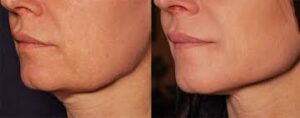In the world of cosmetic procedures, advancements in technology have made it possible to achieve dramatic results without the need for invasive surgery. Two such innovations are Facetite and Bodytite, minimally invasive treatments designed to tighten skin, reduce fat, and contour the face and body. These procedures are gaining popularity for their ability to deliver noticeable results with minimal downtime. In this article, we’ll explore what Facetite and Bodytite are, how they work, their benefits, and who they’re best suited for.
What Are Facetite and Bodytite?
Facetite and Bodytite are radiofrequency-assisted lipolysis (RFAL) treatments that use advanced technology to tighten skin and reduce fat in targeted areas. While Facetite focuses on the face and neck, Bodytite is designed for the body, including areas like the arms, abdomen, thighs, and more. Both procedures are minimally invasive, meaning they require only small incisions and offer faster recovery times compared to traditional surgical options like facelifts or liposuction.
How Do Facetite and Bodytite Work?
Both treatments use radiofrequency energy to heat the deeper layers of the skin and underlying fat. This process stimulates collagen production, tightens loose skin, and melts fat cells, which are then naturally eliminated by the body. Here’s a closer look at how each procedure works:
- Facetite:
- Targets sagging skin, wrinkles, and jowls on the face and neck.
- A small cannula is inserted under the skin to deliver controlled radiofrequency energy.
- The heat tightens the skin and stimulates collagen, resulting in a firmer, more youthful appearance.
- Bodytite:
- Addresses loose skin and stubborn fat in areas like the arms, abdomen, thighs, and buttocks.
- Similar to Facetite, a small cannula is used to deliver radiofrequency energy.
- The procedure contours the body by tightening skin and reducing fat deposits.
Benefits of Facetite and Bodytite
These innovative treatments offer a range of benefits for individuals looking to enhance their appearance without undergoing surgery:
- Minimally Invasive: Both procedures require only small incisions, reducing the risk of scarring and complications.
- Minimal Downtime: Most patients can return to their normal activities within a few days.
- Natural-Looking Results: The stimulation of collagen production ensures gradual, natural-looking improvements.
- Versatility: Facetite and Bodytite can address multiple concerns, from sagging skin to stubborn fat.
- Long-Lasting Effects: Results can last for several years, especially with proper skincare and maintenance.
Who Is a Good Candidate for Facetite and Bodytite?
Facetite and Bodytite are ideal for individuals who:
- Have mild to moderate skin laxity.
- Want to avoid the risks and downtime associated with surgery.
- Are looking for subtle yet noticeable improvements in their appearance.
- Have realistic expectations about the results.
However, these treatments may not be suitable for individuals with severe skin sagging or those who require significant fat removal. A consultation with a qualified practitioner can help determine if Facetite or Bodytite is right for you.
What to Expect During and After the Procedure
Both Facetite and Bodytite are performed under local anesthesia, ensuring patient comfort throughout the process. The procedure typically takes 1-2 hours, depending on the treatment area. Afterward, patients may experience mild swelling, bruising, or discomfort, but these side effects usually subside within a few days.
Recovery Tips:
- Follow your practitioner’s aftercare instructions carefully.
- Avoid strenuous activities for at least a week.
- Wear compression garments (for Bodytite) to support the healing process.
- Stay hydrated and maintain a healthy lifestyle to prolong results.
Facetite vs. Bodytite: Which One Is Right for You?
The choice between Facetite and Bodytite depends on your specific concerns:
- Facetite is ideal for facial rejuvenation, targeting areas like the cheeks, jawline, and neck.
- Bodytite is better suited for body contouring, addressing areas like the arms, abdomen, and thighs.
In some cases, patients may choose to combine both treatments for a comprehensive transformation.
Conclusion:
Facetite and Bodytite represent the future of cosmetic treatments, offering a safe, effective, and minimally invasive alternative to traditional surgery. Whether you’re looking to rejuvenate your face or contour your body, these procedures can help you achieve your aesthetic goals with minimal downtime and natural-looking results.
If you’re considering Facetite or Bodytite, consult with a qualified practitioner to discuss your options and create a personalized treatment plan. With the right approach, you can enjoy a firmer, more youthful appearance and renewed confidence in your skin.

